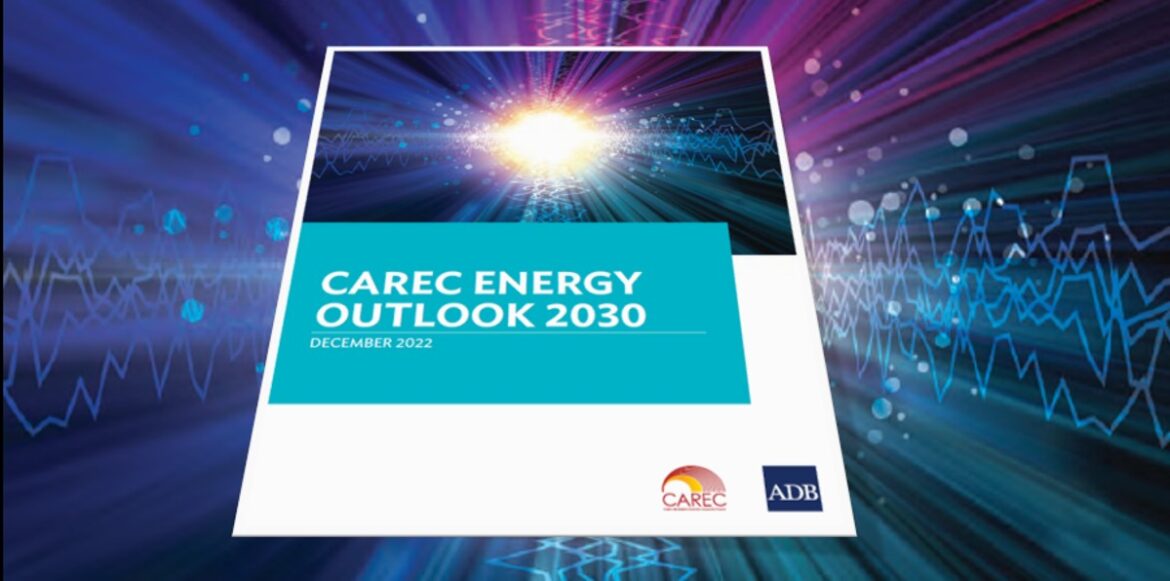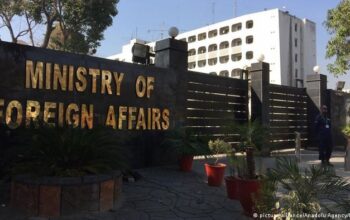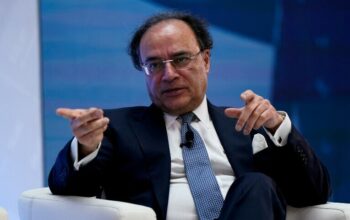The CAREC Energy Outlook 2030 identifies generation rehabilitation, expansion, and energy efficiency measures on the consumption side as the top investment categories.
By Ahmer Kureishi
ISLAMABAD: Pakistan’s needs up to USD 155 billion in investment until 2030 to keep its energy sector ship-shape, says an authoritative new study published by a regional think tank.
Published by the inter-governmental Central Asia Regional Economic Cooperation (CAREC) Program, the CAREC Energy Outlook 2030 “comprehensively analyses options for future energy market development” in the 11 CAREC countries.
“Being one of the largest markets in the CAREC region, Pakistan’s population is currently growing by 2 percent annually, with an ever-growing potential customer base”, says the Outlook, noting however that more than a quarter of the population does not have access to power”, says the study.
“With suitable government priorities and regulatory frameworks, this would provide a substantial basis for investment in the energy sector, with more possibilities for return on investment and project implementation”.
One of the flagship projects under the CAREC Energy Strategy 2030, the study analyses three distinct scenarios to project Pakistan’s energy supply and demand through 2030.
The first of these, called the business-as-usual (BAU) scenario, assumes current energy system and policies; the second, called government commitments (DC) scenario, is based on the priorities of the government of Pakistan; the third scenario is called green growth (GG) scenario and considers enhanced energy transition and environmental policies.
Investment needs projected by the Outlook vary significantly across the three scenarios, with estimates ranging from USD 62 billion to USD 155 billion. The most significant investments are required in the power generation and energy efficiency sectors because of the rapidly growing demand and low baseline efficiency.
“In all three scenarios, the largest investments are needed for the development of the country’s hydropower capacity, ranging from USD 11 billion to USD 26 billion”, says the Outlook.
“Investment needs for wind and solar energy are expected to reach nearly USD 12 billion in the BAU scenario, USD 36 billion in GC scenario, and USD 57 billion in the GG scenario, which the study says illustrate the country’s ambitious plans for harnessing its large renewable energy potential.”
Generation rehabilitation and expansion are the investment categories estimated to require the largest share of the total—ranging from 60 percent to 75 percent, or USD 38 billion to USD 115 billion, varying across scenarios.
The next biggest category is energy efficiency measures on the consumption side, requiring USD 12 billion in the BAU scenario, almost USD 21 billion in the GC scenario, and over USD 26 billion in the GG scenario.
The modernization and expansion of the power and gas grids, and the introduction of advanced metering equipment require investments of approximately USD 13 billion to USD 14 billion.
Pakistan, the only CAREC member currently operating nuclear power plants besides China, views nuclear power as a key part of its national energy system.
In accordance with the country’s targets for nuclear power generation, investments needed for the expansion and rehabilitation of nuclear facilities account for nearly USD 12 billion in the BAU scenario, USD 21 billion in the GC scenario, and USD 31 billion in the GG scenario.
Challenges & opportunities
The study notes that several challenges must be addressed to further unlock Pakistan’s energy market for private companies.
It notes how the T&D sectors suffered greatly from underinvestment over the last several decades because of a strong focus on generation, and how as a result, transmission losses in Pakistan are one of the highest in the region, with some distribution companies reaching losses of 38 percent.
“While policies, such as the Transmission Line Policy, have been established to attract private investments, a centralized Transmission Plan considering load development in the future is required to set a long-term direction for network development, and to establish realistic targets for reducing T&D losses and attracting investments (Government of Pakistan, PPIB 2015)”, says the Outlook.
“Another challenge stems from the country’s electrification rate, with more than 25 percent of the population having no access to electricity. With increases in rural electrification, demand will increase significantly, putting more strain on distribution companies and generation.
“Finally, challenges in the T&D sector are reinforced by the issue of circular debt. With growing power generation from thermal plants, higher costs were inflicted via the import of high-priced fuels and currency devaluation.
“At the same time, distribution utilities tasked with energy supply face financial hurdles due to the low collection rate of tariffs and the inability to meet regulatory targets for T&D losses.
“As a result, distribution companies are unable to pay generation companies for purchased electricity, starting a chain of debts that reach fuel providers via power generation companies.
“The differential between NEPRA-approved tariffs and the uniform tariffs is paid via a tariff differential subsidy, which adds a significant financial burden on the government.”
The study acknowledges that the government is moving toward tackling these challenges and improving the investment climate by establishing a clear and favorable environment for private investors in the energy sector.
“Pakistan recently approved an implementation plan for a regulatory framework that will establish a competitive market structure in the wholesale segment via a bilateral contract.
“Furthermore, the government plans to unbundle natural gas utilities into transportation and distribution companies and establish a competitive natural gas market, which will prove beneficial in terms of attracting private investments in the long-term.
“Pakistan has already introduced specific incentives for its renewable power sector to take advantage of its substantial renewable resource potential of more than 3,000 GW (including hydropower). With feed-in tariffs for wind and solar PV technologies and a clear plan for renewable energy generation, it aims to support further development of renewable energy.
“Considering the sizeable development needs in the energy sector and the government’s prioritization of renewable energy, opportunities for investment are significant.
“To resolve power issues and improve energy distribution capabilities, the government is considering the partial privatization of distribution companies through management contracts and concession agreements. This opens up a possibility of ensuring sufficient power supplies, mitigating losses, and increasing competitiveness in the distribution market.”
Policy recommendations
The study notes that Pakistan has taken steps toward introducing efficient regulatory and policy frameworks that will create more opportunities for the private sector, but makes 8 recommendations that it says would provide further development. The recommendations are:
(i) Gradually decrease energy subsidies for generation and distribution. This can potentially be achieved by revising the existing tariff structure to allow higher returns for T&D companies, thereby decreasing circular debt while enabling larger infrastructure investments. The revised subsidy strategy for power consumers devised in 2021 is an important step in this direction.
(ii) Continue the expansion of and support for the renewable energy sector. The tremendous potential for solar PV and wind power generation should be developed rapidly. A transition away from thermal generation would reduce both emissions and supply risks, decreasing the country’s dependency on imports.
(iii) Introduce carbon pricing, specifically an emissions trading scheme. Carbon pricing is an effective policy instrument to mitigate GHG emissions, mainly by passing the cost of emitting to the emitters and thereby giving them financial incentives to reduce their emissions. Launching the National Committee on Establishment of Carbon Markets in December 2019 was the first step in this direction.
(iv) Introduce a detailed energy plan for the energy sector that establishes concrete actions and measures. The successful adoption of a detailed energy plan for the energy sector will improve transparency and help guide private investors in their search for investment opportunities.
(v) Clearly define resource categories to ensure proper development. Categorizing hydropower as a renewable energy resource is crucial for the successful implementation of further projects, and for attracting more investment via incentives for renewable power projects.
(vi) Continue energy sector reforms via privatization and develop competitive markets further.
The shift toward a competitive energy market for both electricity and natural gas should continue, with clearly adopted legislation to ensure efficient implementation.
(vii) Establish development plans for the transmission sector and rural electrification. One of the key challenges is high T&D losses, which is also a primary cause of circular debt in the market. The successful implementation of the country’s transmission line development plan will provide a defined strategy toward the reduction of losses. In addition, strategy planning for the electrification of rural regions is of great importance, as it will introduce more customers to the grid and enable further economic development.
(viii) Further introduce energy efficiency policy measures in consumption sectors via building codes and relevant legislations. While an energy efficiency policy with a strong development goal has been established, further implementation of related rules and secondary legislation is required to ensure sufficient progress during the implementation stage.
The CAREC region’s cross-border ties and possibilities for trade provide another opportunity for investors. For instance, the Central Asian Power System (CAPS) interconnects Central Asian countries (Kazakhstan, Kyrgyz Republic, and Uzbekistan, with Tajikistan expected to be reconnected in 2022) at different voltage levels. Some other large interconnection projects include the Trans Anatolian Natural Gas Pipeline, supplying natural gas from Azerbaijan via Georgia to Türkiye and Europe; the Turkmenistan–Afghanistan– Pakistan Power Interconnection; and the Turkmenistan–Afghanistan–Pakistan–India gas pipeline. While predictions as to whether and when the last two projects can be commissioned are difficult because of the political situation in Afghanistan, these projects highlight the solid potential of regional trade in the CAREC region.
More about CEREC
The program is professedly a proactive facilitator of practical, results-based regional projects, and policy initiatives critical to sustainable economic growth and shared prosperity in the region.
“Since its inception in 2001 and as of December 2021, CAREC has mobilized USD 41 billion in investments that have helped establish multimodal transportation networks, increased energy trade and security, facilitated free movement of people and freight, and laid the groundwork for economic corridor development”, says the program website.
“CAREC 2030 provides the new long-term strategic framework for the program leading to 2030. It is anchored on a broader mission to connect people, policies and projects for shared and sustainable development, serving as the premier economic and social cooperation platform for the region.
Besides Pakistan, China, and Afghanistan the CAREC includes Azerbaijan, Georgia, Kazakhstan, Kyrgyz Republic, Mongolia, Tajikistan, Turkmenistan, and Uzbekistan.
The CAREC partners with multilateral to help enhance the economic potential of the CAREC region, and help mainstream regional cooperation in the areas of transport, trade, and energy.
The chief among them are the Asian Development Bank (ADB); the Asian Infrastructure Investment Bank (AIIB); the European Bank for Reconstruction and Development (EBRD); the International Monetary Fund (IMF); the Islamic Development Bank (IsDB); the United Nations Development Programme (UNDP); and the World Bank.
The CAREC Energy Outlook 2030 may be read or downloaded below.
Copyright © 2021 Independent Pakistan | All rights reserved




